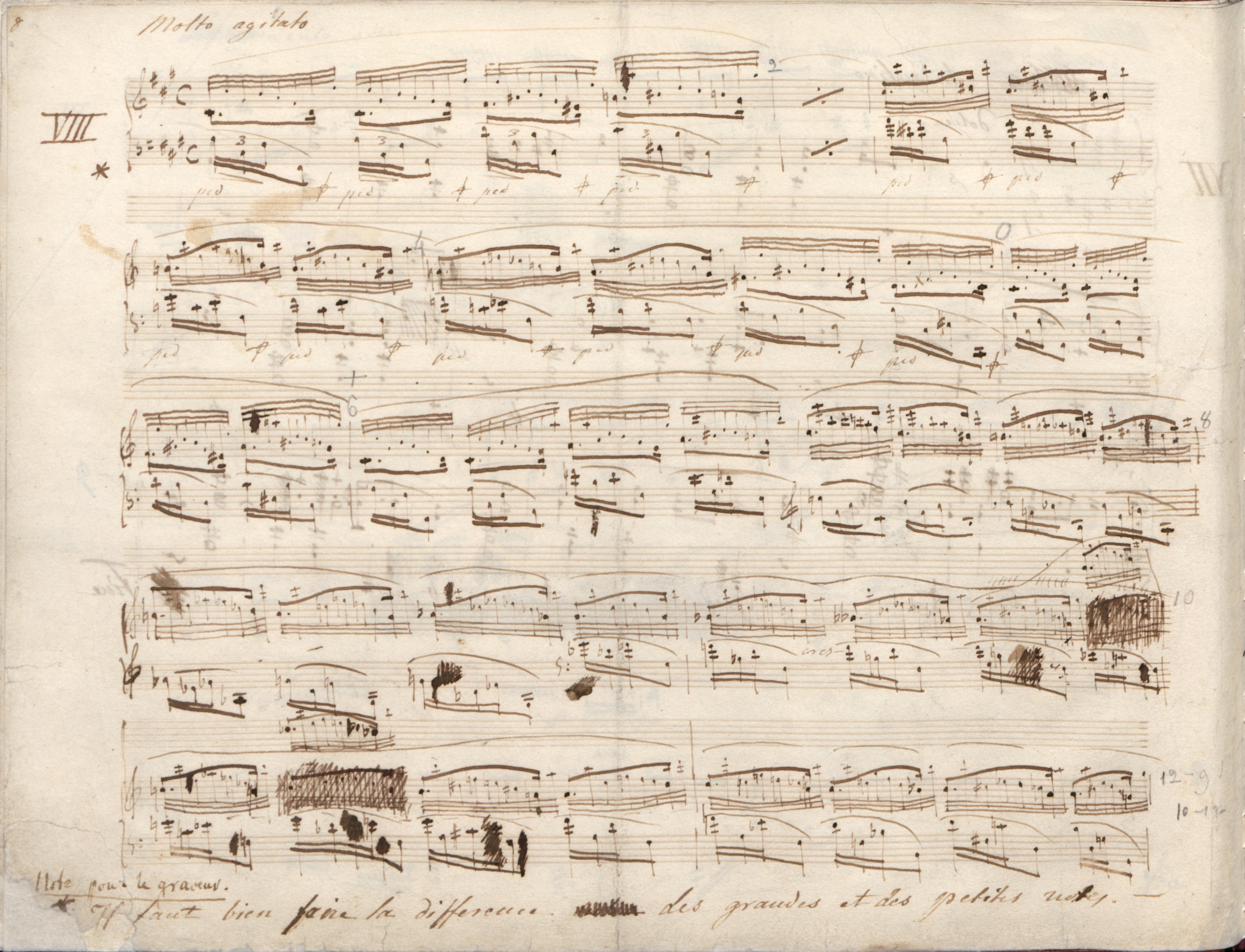Op. 2, Variations in B♭ major
Op. 10, 12 Etudes
Op. 11, Concerto in E minor
Op. 21, Concerto in F minor
Op. 22, Polonaise in E♭ major
Op. 24, 4 Mazurkas
Op. 25, 12 Etudes
Op. 26, 2 Polonaises
Op. 27, 2 Nocturnes
Op. 28, 24 Preludes
Op. 30, 4 Mazurkas
Op. 35, Sonata in B♭ minor
Op. 50, 3 Mazurkas
Op. 63, 3 Mazurkas
Op. 64, 3 Waltzes
(Op. 4), Sonata in C minor




Op. 28 No. 8, Prelude in F♯ minor
In all sources, the last note in the 1st half of the bar is an a2; like in analog. b. 20. As they are the only places in which the last two demisemiquavers of the principal figure of the Prelude do not constitute the interval of an octave, one could assume a mistake of Chopin, e.g. a Terzverschreibung error. However, the following arguments are against a possible mistake:
- In A this figure is written out with notes in both bars (without abbreviations and repetitions) and without corrections. Therefore, it is extremely improbable that Chopin would have committed the same mistake twice in this exact place.
- Terzverschreibung errors are caused by a confusing impact of a combination of a few identical, parallel lines. Consequently, such mistakes occur within the stave or on ledger lines, but not between the stave and a ledger line.
- An extended span of figurations that generally fit into an octave is often to be found in Chopin's pieces, e.g. in the Preludes No. 9 in E Major, b. 2, 4 and 8, No. 15 in D
 Major, b. 70 and 72-75, No. 23 in F Major, b. 14 or in the Etude in A
Major, b. 70 and 72-75, No. 23 in F Major, b. 14 or in the Etude in A Major, Op. 10 No. 10, b. 61-62 and 68 or the Etude in F Major, Op. 25 No. 3, b. 18 and 20.
Major, Op. 10 No. 10, b. 61-62 and 68 or the Etude in F Major, Op. 25 No. 3, b. 18 and 20. - Chopin's use of a2 in the discussed place may be justified by his willingness to avoid a false relation between f
 2-f1 and the next note in the L.H.
2-f1 and the next note in the L.H.
According to us, the above arguments rule out the possibility of a mistake in the discussed situation; f 2 instead of a2 encountered in some later editions must be erroneous.
2 instead of a2 encountered in some later editions must be erroneous.
Compare the passage in the sources »
category imprint: Source & stylistic information
notation: Pitch

